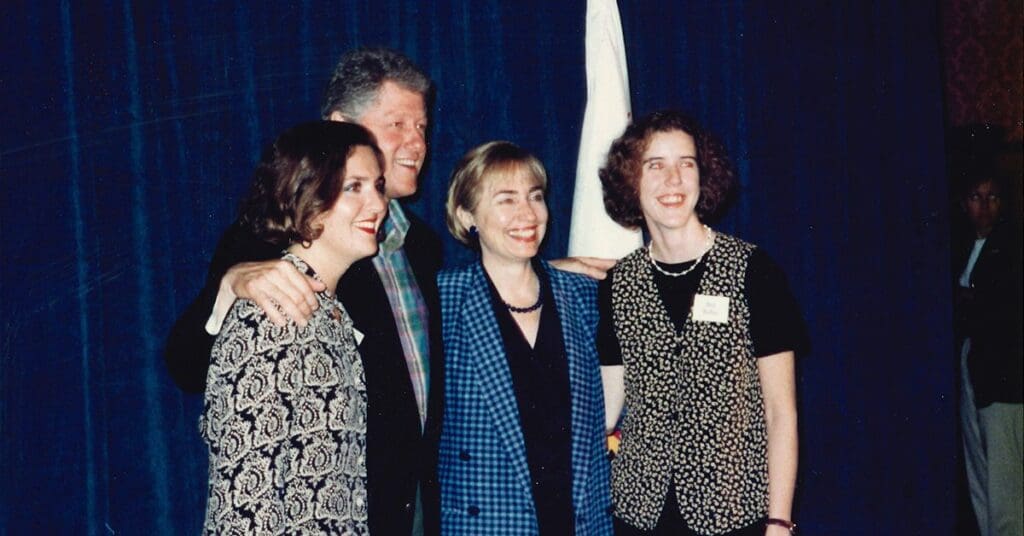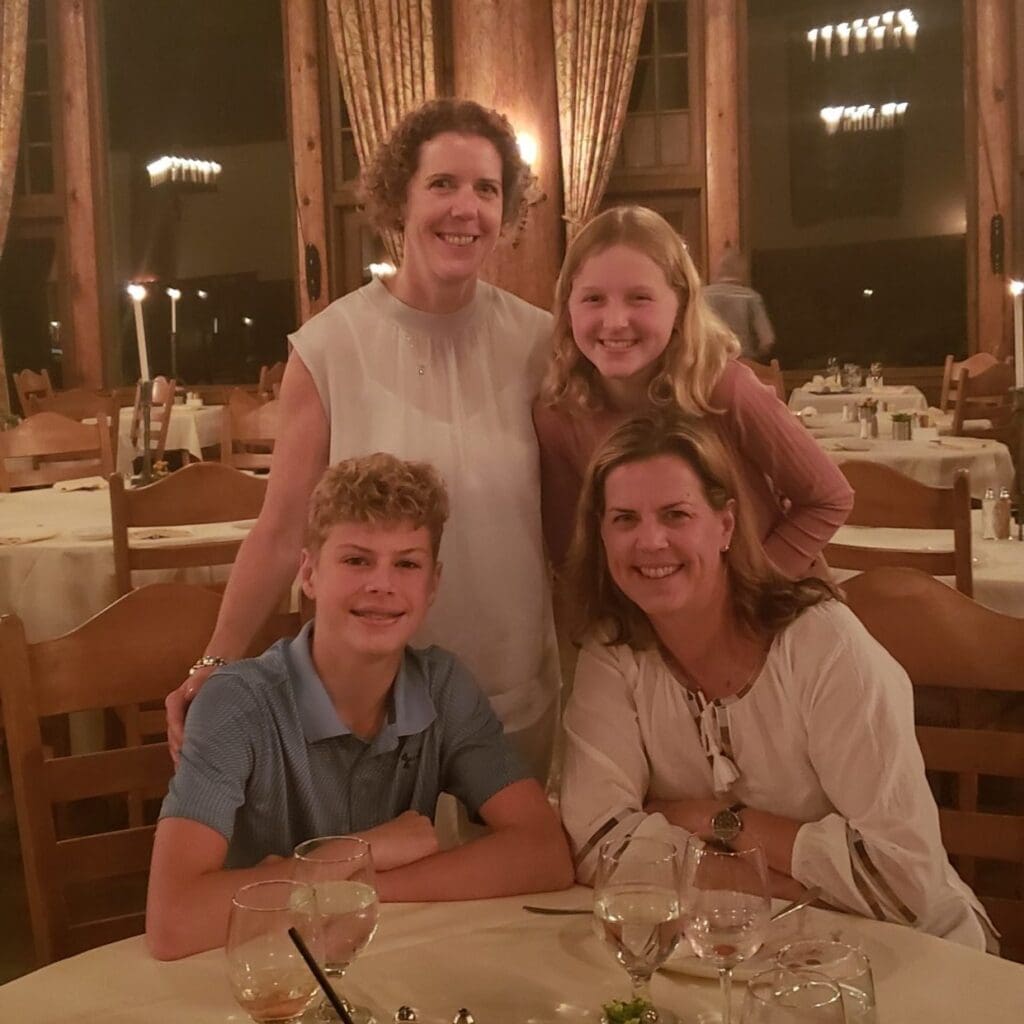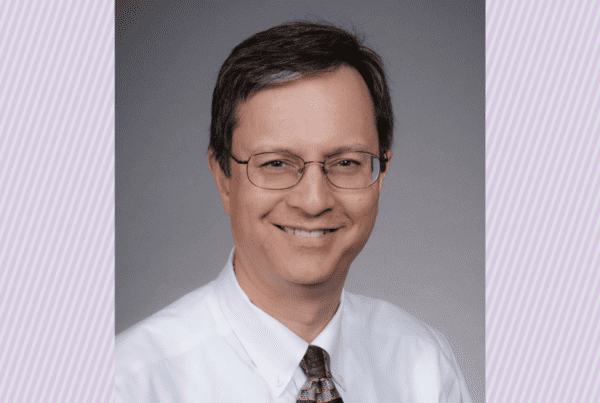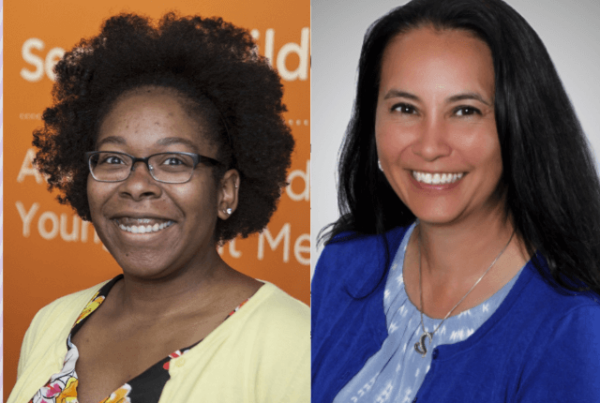Meet Beth Buffalo, PhD, the New Chair of Physiology and Biophysics
Beth Buffalo’s path to a doctorate in neuroscience, even as she ticked off other boxes to become a philosophy professor, was foreshadowed in high school by a science fair experiment in her basement. Buffalo’s precocious experiment involved her hypothesis about a chemical’s effects on aggression, guidance from the University of Arkansas Medical School and 20 rats supplied by the National Center for Toxicological Research. She went on to work in the Center’s lab during summers in high school and college, researching neuropharmacology with animal models.
Buffalo’s research with nonhuman primates lay the groundwork for her future investigations at Emory University and the Yerkes National Primate Research Center in Atlanta. She is currently serving as the interim associate director for research at the Washington National Primate Research Center.
Buffalo’s official appointment as the chair of Physiology & Biophysics (or “PBio”) follows the stepping down of Stan Froehner, PhD, after 20 years as department chair. Buffalo is a professor and principal investigator of the Buffalo Lab, which explores the neural mechanisms that support memory and cognition.
Buffalo has been with the UW Department of Physiology & Biophysics since 2013, when she moved her laboratory from the Emory University Department of Neurology to the University of Washington.
Buffalo credits exemplary teachers and mentors with shaping her career, beginning from the public schools in her childhood to those who mentored her at Wellesley College (BA Philosophy), Oxford University (courses in Philosophy, Psychology and Physiology) and the University of California at San Diego (MA Philosophy and PhD Neuroscience).
We sat down with Buffalo to learn more about her vision for the PBio department and discovered fun facts, such as how her educational history was shaped in part by the former Secretary of State Hillary Clinton.
Who were some of the early influences on your educational and career path?
I had wonderful teachers at my public high school in downtown Little Rock, Arkansas. My science teachers helped me connect with a professor at the University of Arkansas Medical School and I started working summer breaks in the lab that supported my science fair experiment.
Bill Clinton was governor of Arkansas when I was in high school. Hillary Clinton was part of an extremely welcoming group of Wellesley alums in Little Rock that recruited students for their alma mater. Hillary and her fellow alums were instrumental in recruiting both my sister and me to Wellesley.

Beth Buffalo and her sister with the Clintons.
How did you go from pursuing a career in philosophy to primate neurophysiology?
The late Professor Howard Eichenbaum, a pioneer in memory studies, was teaching at Wellesley when I was there. He was an incredibly dynamic teacher and his lectures inspired me to study learning and memory. I had the opportunity to do undergraduate research with Howard and another professor, Joanne Berger-Sweeney. Then, my junior year at Oxford, I took a course that combined philosophy, psychology and physiology. I also was able to get laboratory experience and was influenced by several incredible professors there.
Although I was heavily involved in neuroscience research, I still had plans to become a philosophy professor. So I entered the philosophy PhD program at the University of California, San Diego to study with Professor Patricia Churchland, concentrating on philosophy of mind. Pat felt strongly that to understand the mind, you have to know the brain. She encouraged me to take the neuroscience graduate courses, helped me identify a research lab at UCSD and really set me on my path.
You spent some of your formative years in laboratories. Besides leading you to your career, how has it shaped you personally?
In the year between college and graduate school, my brother was serving in the U.S. Navy in Italy and invited me to come and travel with him. I worked in labs the summer before to save money and after college, I joined him in Italy. I spent about ten months there. Working in the lab helped inspire my career and supported a great year of traveling and learning about another culture.
Tell us more about Neurotrack, the company that you launched.
Neurotrack offers noninvasive clinical tests, using the built-in cameras on your laptop, to assess one’s risk for Alzheimer’s disease. These tests were developed based on some of my PhD research with monkeys. We used cameras to measure monkeys’ eye movements as they viewed a series of pictures. When they are exploring the pictures, monkeys move their eyes differently for novel pictures compared to pictures they have seen before. This is also true for humans and provides an easy way to measure memory. We also found that this form of memory depends in the integrity of the hippocampus, a brain structure that is one of the earliest sites of neuropathology in Alzheimer’s disease. Additional research with human subjects at Emory University demonstrated that changes in viewing behavior were predictive of cognitive decline due to Alzheimer’s.
I co-founded Neurotrack with my PhD advisor and a fellow researcher, and one of my friends in Atlanta was recruited to be our CEO and co-founder. The company is now based in Silicon Valley, Redwood City, with additional offices in Vancouver and Tokyo, and it has expanded to providing information about how to reduce your risk of Alzheimer’s, even in terms of diet and exercise, and using our eye movement test to monitor ongoing risk.
What does your family enjoy most about Seattle?
My wife and I have two teenagers, a dog named Georgi and a cat named Louise, and we love living in the Pacific Northwest. There is so much natural beauty in this state, and we feel like we have barely scratched the surface of exploring it all. We moved here when the kids were pretty young, and they have had great experiences with sailing, skiing, rock climbing, camping, and even learning to SCUBA dive. My wife and I love hiking and can sometimes convince the kids to join us. We also feel really lucky to have a supportive community of friends and neighbors — we are looking forward to someday getting back to our usual routine of book club, game nights and hanging out by the lake in the summer.

Buffalo (standing), her wife and their kids.
What are your plans to continue diversity, equity and inclusion (DEI) efforts in the PBio department?
We are all in. The events of 2020 led us to reaffirm our values of an inclusive and anti-racist community and to commit to increasing diversity among the faculty. We have a newly formed DEI Committee and we’ve had facilitated discussions and trainings around equity. Two of our junior faculty have made outreach connections in the community to increase the pipeline for underrepresented minority high school students and we are working on establishing a new summer internship program for these students.
What is on your priority short list to work on as chair for the PBio department?
In addition to our DEI work, I hope to strengthen some of the connections between our research and the clinical departments. We have faculty studying age-related changes in cellular biophysics and in cardiovascular physiology, and our increased understanding around these basic mechanisms could provide avenues for new therapeutic approaches. My work in memory also provides a link to degenerative diseases like Alzheimer’s and other age-related cognitive disorders.
What makes you most proud of the Physiology & Biophysics Department?
Along with the long history of excellence in research, we have an amazing culture of collegiality. People like working together. There is a collaborative and cohesive spirit in the department. We all want to see each other do well. I also am really proud of the fact that faculty members care deeply about our trainees and are committed to providing outstanding teaching and mentoring.
Guest Writer: Annie Kuo


